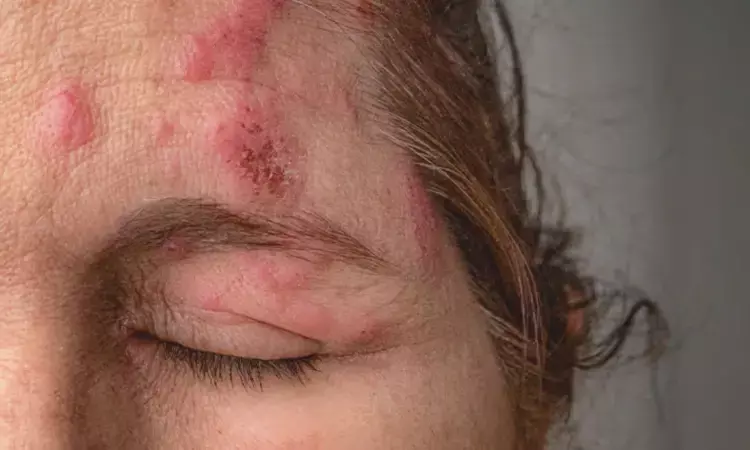- Home
- Medical news & Guidelines
- Anesthesiology
- Cardiology and CTVS
- Critical Care
- Dentistry
- Dermatology
- Diabetes and Endocrinology
- ENT
- Gastroenterology
- Medicine
- Nephrology
- Neurology
- Obstretics-Gynaecology
- Oncology
- Ophthalmology
- Orthopaedics
- Pediatrics-Neonatology
- Psychiatry
- Pulmonology
- Radiology
- Surgery
- Urology
- Laboratory Medicine
- Diet
- Nursing
- Paramedical
- Physiotherapy
- Health news
- Fact Check
- Bone Health Fact Check
- Brain Health Fact Check
- Cancer Related Fact Check
- Child Care Fact Check
- Dental and oral health fact check
- Diabetes and metabolic health fact check
- Diet and Nutrition Fact Check
- Eye and ENT Care Fact Check
- Fitness fact check
- Gut health fact check
- Heart health fact check
- Kidney health fact check
- Medical education fact check
- Men's health fact check
- Respiratory fact check
- Skin and hair care fact check
- Vaccine and Immunization fact check
- Women's health fact check
- AYUSH
- State News
- Andaman and Nicobar Islands
- Andhra Pradesh
- Arunachal Pradesh
- Assam
- Bihar
- Chandigarh
- Chattisgarh
- Dadra and Nagar Haveli
- Daman and Diu
- Delhi
- Goa
- Gujarat
- Haryana
- Himachal Pradesh
- Jammu & Kashmir
- Jharkhand
- Karnataka
- Kerala
- Ladakh
- Lakshadweep
- Madhya Pradesh
- Maharashtra
- Manipur
- Meghalaya
- Mizoram
- Nagaland
- Odisha
- Puducherry
- Punjab
- Rajasthan
- Sikkim
- Tamil Nadu
- Telangana
- Tripura
- Uttar Pradesh
- Uttrakhand
- West Bengal
- Medical Education
- Industry
Age, Gender, and Steroid Use Linked to Ocular Issues in Herpes Zoster Ophthalmicus, Study Finds

USA: A recent study in the American Journal of Ophthalmology has shed light on the risk factors associated with ocular complications in patients suffering from herpes zoster ophthalmicus (HZO) and the concerning rates of shingles vaccination within a large urban health system.
The researchers identified several key factors associated with the development of ocular complications in HZO, including age, female gender, use of steroids at the initial visit, and the presence of stromal keratitis. Additionally, they noted that shingles vaccination rates were low among the study population. The study stated that recognizing these risk factors and the low vaccination uptake can help pinpoint at-risk groups, ultimately aiding disease prevention efforts.
"The study involving urban patients with herpes zoster ophthalmicus found that corneal scarring was the most prevalent complication, occurring in 70% of cases," the researchers reported.
Ann-Marie Lobo-Chan, University of Illinois at Chicago, Illinois Eye and Ear Infirmary, and colleagues aimed to analyze the epidemiology of herpes zoster (HZ) and HZO within an urban hospital system, focusing on identifying risk factors for ocular complications in HZO. They also sought to report the shingles vaccination rates and instances of HZ reactivation following vaccination in this population.
For this purpose, the research team conducted a retrospective cohort study involving patients treated at the University of Illinois Hospital system between January 1, 2010, and December 1, 2021, who were diagnosed with HZ and HZO based on diagnosis codes. They reviewed the medical records of HZO patients who had been seen within one year of their diagnosis. Using multivariable logistic regression analysis, they identified factors linked to the development of ocular complications in HZO.
Based on the study, the researchers reported the following findings:
- During the study period, 3283 patients had HZ; the mean age of onset was 52.3 years, 61.6% were female, and 37% were Black.
- HZO with ocular involvement was present in 3.4% of patients.
- Ocular complications developed in 436.4% of patients; the most common complication was corneal scarring (70%).
- Age (odds ratio [OR] 1.04), female gender (OR 2.86), steroids at initial visit (4.46), and stromal keratitis (OR 3.45) were associated with developing ocular complications.
- Of eligible populations, 1.5% received shingles vaccination; 43 patients developed reactivation of HZ following vaccination.
As the authors highlight, the study emphasizes the interplay between demographic factors, clinical characteristics, and vaccination rates, calling for increased vigilance and action to protect at-risk populations from the debilitating effects of herpes zoster ophthalmicus. Enhanced awareness and vaccination initiatives, as suggested by the research, may be crucial in mitigating risks and improving overall health outcomes for this vulnerable group.
Reference:
Lobo-Chan, A., Song, A., Kadakia, A., & Mehta, S. D. (2024). Risk Factors for the Development of Ocular Complications in Herpes Zoster Ophthalmicus and Zoster Vaccine Utilization in a Large, Urban Health System. American Journal of Ophthalmology. https://doi.org/10.1016/j.ajo.2024.09.028
Dr Kamal Kant Kohli-MBBS, DTCD- a chest specialist with more than 30 years of practice and a flair for writing clinical articles, Dr Kamal Kant Kohli joined Medical Dialogues as a Chief Editor of Medical News. Besides writing articles, as an editor, he proofreads and verifies all the medical content published on Medical Dialogues including those coming from journals, studies,medical conferences,guidelines etc. Email: drkohli@medicaldialogues.in. Contact no. 011-43720751


